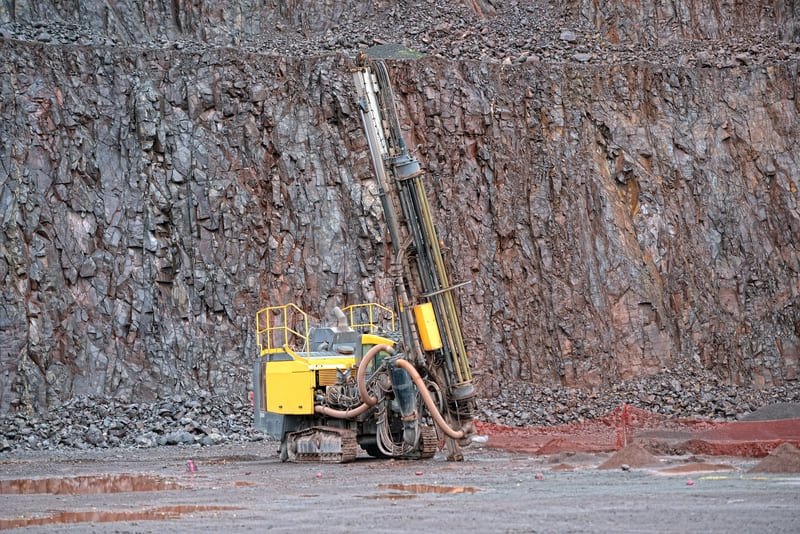
In the world of construction and mining, time is more than just money—it's everything. I remember when a single delay could throw off an entire project timeline. That's why understanding how equipment like DTH drill bits affect our schedules is crucial.
DTH (Down-The-Hole) drill bits play a pivotal role in project timelines by achieving higher penetration rates and efficiency in hard rock formations, ultimately leading to quicker drilling times and minimized operational downtime.
Thinking back to my own projects, I recall how frustrating it was to deal with unexpected slowdowns. You know that feeling when you're up against a rock formation that seems to defy every bit of logic and machinery? That's where DTH drill bits come into play. Their design allows for direct energy transfer, which means less power wasted and more progress made. The increased speed and efficiency not only keep projects on schedule but also help cut down costs significantly. In this post, I'll share more insights into how these tools work their magic and tips on maximizing their potential to keep everything running smoothly.
DTH bits reduce project timelines by 30%.True
DTH bits' efficiency and speed in hard rock cut project durations significantly.
DTH drill bits require frequent maintenance.False
DTH bits are durable, reducing maintenance needs and downtime.
Why are DTH Drill Bits So Much Faster than Other Methods?
Ever wonder why DTH drill bits are like the superheroes of the drilling world? Their speed in tough terrains is nothing short of amazing!
DTH drill bits speed up drilling by offering superior penetration rates, effective energy transfer, and durability, especially in challenging rock conditions.
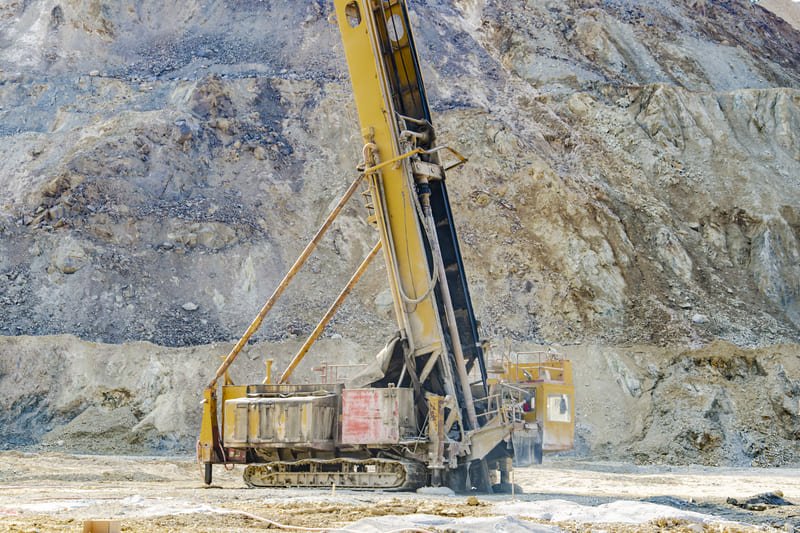
Superior Penetration Rates
DTH (Down-The-Hole) drill bits are renowned for their high penetration rates, which are particularly advantageous in hard rock formations. I remember the first time I saw a DTH drill bit in action. It was like watching a well-rehearsed dance, each move precise and purposeful. These bits, with their combination of rotation and hammering, cut through hard rock like a knife through butter. This is primarily due to their design, which allows for direct impact energy to be applied at the rock surface. Unlike other drilling methods that rely on rotational force alone, DTH drill bits combine rotation with a hammering action. This combination results in faster and more effective rock breaking1, reducing the time needed to complete each borehole.
Efficiency in Hard Rock
Picture this: you're on a site with challenging geological conditions, and everything seems to slow down—except your DTH drill bits. They thrive in abrasive environments where others falter. In challenging geological conditions, DTH drill bits maintain consistent performance. Their ability to perform well in abrasive and hard rock conditions is a key factor in their speed. The consistency they provide is like having a reliable friend who never lets you down. This reliability means fewer headaches and more progress when you're dealing with tough ground conditions.
Direct Energy Transfer
The genius of DTH drill bits lies in their setup. The mechanism involves placing the hammer directly above the bit, ensuring energy is delivered directly to the rock face with minimal loss. Imagine trying to nail something with a hammer but having to pass the energy through a sponge first—that's how inefficient other methods can be! Such efficient energy transfer is crucial for maximizing drilling speed as less power is wasted in friction or other losses, allowing for quicker progress through stubborn materials.
Reduced Downtime
In this industry, time is money, and downtime is a killer. Another critical advantage of DTH drill bits is their durability; constructed to withstand harsh drilling environments, these bits require less frequent replacement and maintenance. The ruggedness of DTH drill bits means they need less babysitting in terms of replacements and maintenance. I’ve seen projects grind to a halt because of constant tool changes, but with DTH bits, those interruptions become rare—it's like having a trusty old car that just keeps running smoothly without needing constant repairs.
Impact on Project Timelines
The real magic happens when you see how all these speed advantages stack up—the cumulative effect of DTH drill bits' speed advantages substantially impacts project timelines. Quicker drilling phases mean projects wrap up faster, often ahead of schedule; faster drilling allows for quicker completion of drilling phases leading to early project completion. I can't stress enough how good it feels to tick off phases ahead of time—it’s like getting an unexpected day off! Plus, quicker completions usually mean cost savings as shorter project durations usually incur lower operational expenses.
Considerations for Maximizing Speed
To truly harness the potential of DTH drill bits, selecting the right bit size and design for specific ground conditions is crucial—like choosing the right shoes for a marathon; getting it wrong can slow you down significantly. Proper bit selection and operating parameters are essential; choosing the correct bit size ensures optimal performance while tweaking air pressure and rotation speed can further enhance performance—these considerations ensure you're getting the most out of your DTH drilling operations2.
In conclusion, embracing the speed and efficiency of DTH drill bits can transform how projects are executed—especially in demanding environments.
DTH drill bits are faster in soft rock than hard rock.False
DTH drill bits excel in hard rock, not soft rock, due to their design.
Direct energy transfer increases DTH drilling efficiency.True
Energy is applied directly at the surface, maximizing efficiency.
How Do DTH Drill Bits Perform in Hard Rock Conditions?
When I first encountered DTH drill bits, I was blown away by their ability to cut through hard rock like butter, totally transforming how I approached my projects.
DTH drill bits are a game-changer for hard rock conditions, thanks to their impressive penetration rates and robust design. They consistently maintain performance, reducing downtime and speeding up project timelines, which is why I trust them for challenging geological formations.

Superior Penetration Rates
I remember the first time I witnessed DTH (Down-The-Hole) drill bits in action. It was during a particularly challenging project where the ground was as tough as nails. These bits managed to drill with such precision and speed, it felt like magic. Unlike traditional methods, DTH bits deliver energy right where it's needed—the drilling surface—allowing us to progress quickly and efficiently. Every extra hole drilled in less time meant we could keep our projects on schedule, thus minimizing project timelines3.
Consistent Performance
There's something reassuring about knowing your equipment won't let you down in the middle of a job. With DTH drill bits, I've found that their design ensures consistent performance, even when the going gets tough. In those moments when I expected things to slow down due to abrasive rock, these bits just kept going. This reliability not only cut down on unexpected costs but also kept the entire team focused on hitting our targets without a hitch, contributing to reduced operational costs4.
Efficient Energy Transfer
The secret sauce of DTH drill bits lies in their ability to transfer energy efficiently. I've been on sites where power resources were scarce and costly. Watching these bits perform with minimal power loss was nothing short of impressive. Their efficiency didn't just speed up our drilling; it made every bit of energy count, which was crucial in keeping our operations both sustainable and cost-effective by improving energy efficiency5.
Durability and Reduced Downtime
One of my favorite things about DTH drill bits is their durability. In environments where rocks seemed determined to wear us down, these bits stood strong. Less time spent on tool replacements and maintenance meant more time drilling—and less stress for everyone involved. For time-sensitive projects, this durability was key in ensuring we hit our deadlines, making DTH drill bits an indispensable part of my toolkit for tackling hard rock challenges effectively while enhancing productivity6.
DTH drill bits reduce project costs by 50%.False
While DTH bits can lower costs, a 50% reduction is exaggerated.
DTH drill bits excel in hard rock formations.True
They maintain high efficiency and penetration rates in hard rock.
How Does Energy Transfer Boost DTH Drilling Efficiency?
Imagine standing at the edge of a drilling site, where every second counts toward project completion. What makes drilling more efficient?
In DTH drilling, energy transfer plays a crucial role in efficiency. The design ensures minimal power loss by directing energy right to the rock surface, boosting penetration rates and cutting costs. This is especially vital in tough geological terrains.
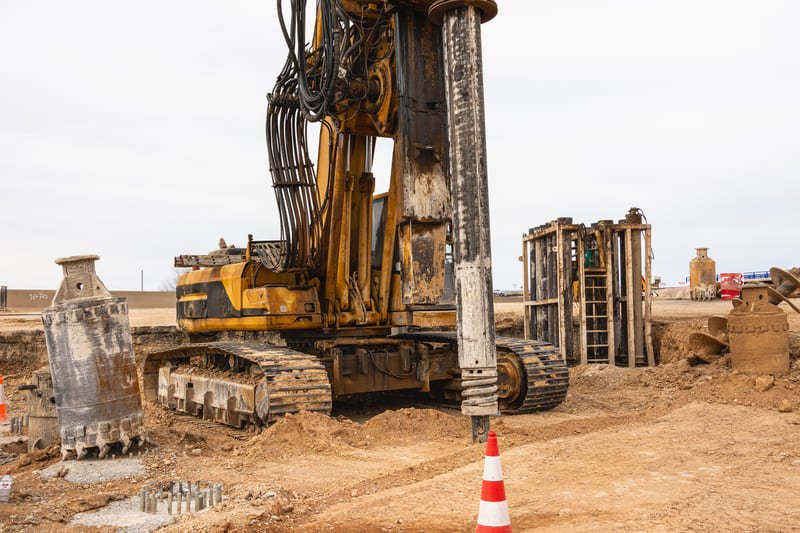
Understanding Energy Transfer in DTH Drilling
I remember the first time I saw a Down-The-Hole (DTH) drill in action—it was like watching a powerful dance between machine and rock. Energy transfer in DTH drilling involves channeling power from the rig straight to the drill bit, a process I’ve learned is key to breaking through tough surfaces efficiently. When energy is lost, it's like trying to break a rock with a feather; inefficient and frustrating. But when energy is applied directly, drilling becomes faster and smoother, especially in stubborn hard rock formations.
Mechanisms of Energy Transfer
In my experience, DTH drilling uses either pneumatic or hydraulic systems to get the job done. The hammer inside acts like a piston, delivering energy with precision and reducing wastage. Imagine how much easier it is to hammer a nail in with a direct hit rather than with a glancing blow—that's what efficient energy transfer does here. Unlike top hammer drills that dissipate energy along the rod, DTH systems focus it right where it’s needed most. This precision not only speeds things up but also prolongs the life of the drill, as efficient energy use enhances both drilling speed7 and tool longevity.
Impact on Drilling Efficiency
The magic of direct energy transfer means more force hits the rock face, which saves time per borehole. I’ve seen how this accelerates project timelines—less time spent per hole means more holes drilled per day, leading to faster completion times and cost savings. For mining and construction projects, these efficiencies translate into real-world benefits, like reduced fuel consumption and less wear on equipment.
Challenges and Considerations
But let’s not forget the challenges. Just as a car needs the right fuel and maintenance, DTH drilling requires proper bit selection, correct air pressure settings, and regular maintenance for peak performance. These factors ensure consistent energy transfer, promoting consistent drilling results8 across varied geological conditions. Ensuring everything is set up right can make the difference between a smooth operation and one plagued by inefficiencies.
DTH bits have higher penetration rates in soft soil.False
DTH bits are particularly effective in hard rock, not soft soil.
Energy transfer in DTH drilling is highly efficient.True
DTH design ensures direct energy application, maximizing efficiency.
How does reduced downtime with DTH drill bits benefit projects?
Imagine drilling without the constant stops and slowdowns. DTH drill bits are game-changers, keeping projects on track and budgets in check.
Reduced downtime with DTH drill bits boosts project efficiency by speeding up drilling, cutting costs, and staying on schedule. These durable bits minimize maintenance and keep operations running smoothly, leading to faster project completion and cost savings in construction and mining.
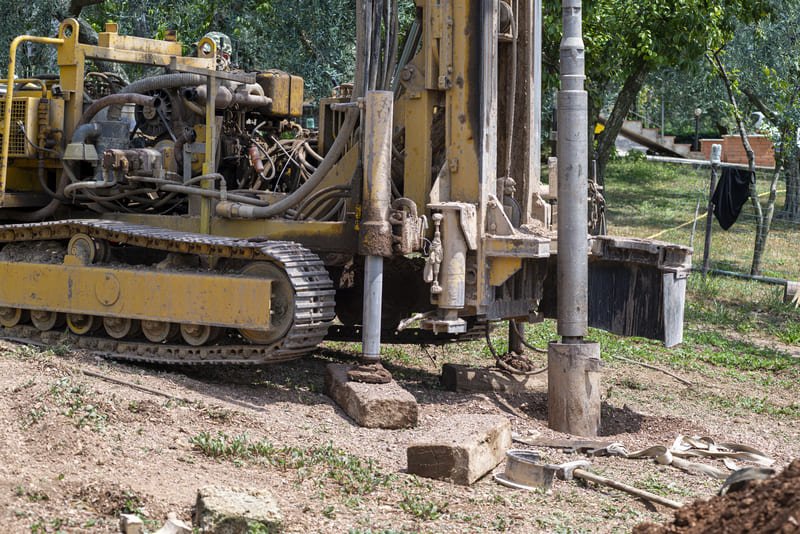
Enhanced Drilling Speed
Let me tell you, nothing beats the thrill of watching a project surge ahead because of enhanced drilling speed. Picture this: you're on-site, maybe in the middle of nowhere, facing a rock formation tougher than your morning coffee. Suddenly, with the right DTH drill bits9, it's like you're slicing through butter. These bits dig deep faster than anything else I've used. This speed means fewer delays and a significant boost in productivity—it's like finding an extra hour in your day.
Lower Operational Costs
I remember those days when project costs ballooned due to constant tool replacements and repairs. Switching to DTH drill bits was like a breath of fresh air for our budget. Their robust design means they last longer, so there's less downtime and fewer replacements. It's as if someone handed you a magic wand that slashes costs on labor and equipment—savings that can be directed to other crucial parts of the project.
Improved Project Timelines
Meeting deadlines can sometimes feel like an uphill battle, but reduced downtime changes the game. With more continuous operation thanks to DTH bits, timelines shrink. I recall a project where we could adhere to deadlines more strictly, reducing stress levels all around. It wasn't just about finishing on time; it meant we could move resources to new opportunities sooner, keeping clients happy and opening doors to future projects.
Increased Productivity
When I think of increased productivity, I think of a well-oiled machine. DTH drill bits keep us moving forward even when the ground wants to fight back. The fewer stops for tool changes mean a steady workflow. This consistency makes it possible to drill more holes in less time, accelerating the entire project pace. Plus, these bits use energy so efficiently that there's less wastage—it's like having a secret weapon that keeps everything running smoothly.
Considerations for Optimal Use
To really make the most of these bits, there's a bit of art to it—like choosing the right size and design for the specific ground conditions. Tweaking air pressure and rotation speed according to the geology can boost drilling speed10 and efficiency even further. It's like fine-tuning an instrument to hit all the right notes.
DTH drill bits reduce downtime significantly.True
DTH bits' durability and efficiency reduce tool replacements and maintenance.
DTH bits are ineffective in hard rock formations.False
DTH bits excel in hard rock due to superior penetration rates and efficiency.
What Are the Cost Implications of Faster Drilling Speeds?
When I first heard about faster drilling speeds, I was excited about the potential time and cost savings, but I wondered if there were any hidden costs involved.
Faster drilling speeds can cut project timelines and lower operational costs, but they often come with increased equipment expenses and potential maintenance issues. Striking a balance between speed and efficiency is key to maximizing cost-effectiveness in drilling operations.
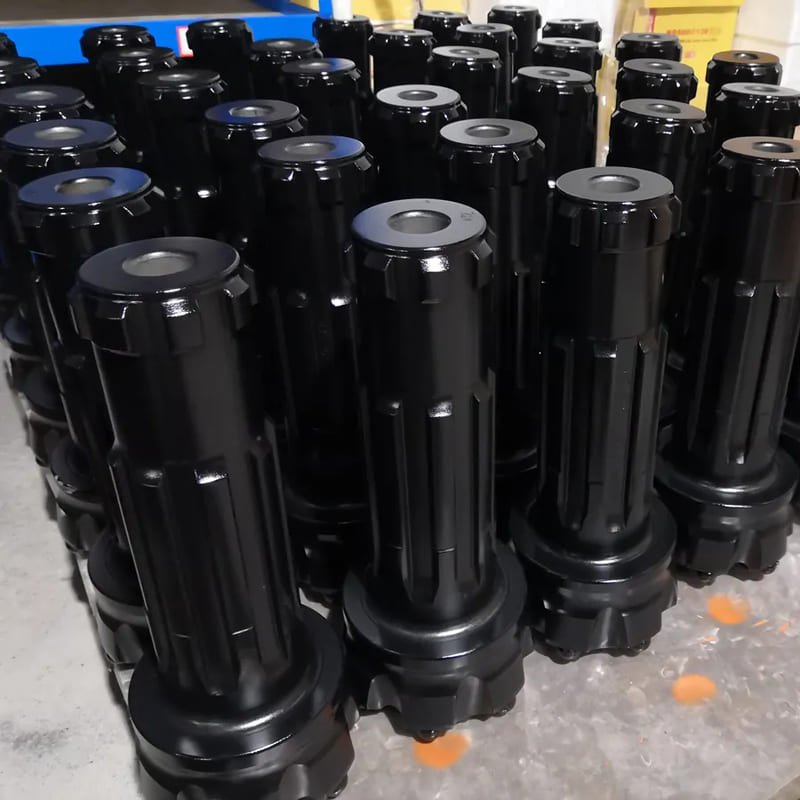
Analyzing Equipment Costs
I remember sitting down with the team, poring over the budget spreadsheets, and realizing that faster drilling speeds demanded cutting-edge equipment. This new gear, although promising, came with a hefty price tag due to the advanced features needed to handle the increased wear and tear. We had to seriously weigh these upfront costs against the potential savings in time and labor. It reminded me of that time we upgraded our home appliances—initially expensive, but the efficiency payoff was worth it. The latest technology11 in drill bits and machinery often comes with a higher price tag due to enhanced features designed to withstand increased wear and tear.
Maintenance and Operational Efficiency
In our past projects, we've noticed that while faster drilling could shave days off the timeline, it sometimes led to more frequent maintenance. The rapid pace meant the equipment wore out quicker, much like when you drive your car too hard and end up needing more frequent oil changes. We had to tweak our maintenance schedules to keep downtime minimal, balancing speed with long-term operational efficiency. The more rapid use of equipment may accelerate wear and necessitate frequent repairs and replacements12.
Labor and Productivity Considerations
I recall a project where reduced drilling time significantly cut down on labor costs. However, this required highly skilled operators who could fully leverage the advanced machinery. Finding and training these individuals was crucial, akin to assembling a top-notch sports team where every player needs to be at the top of their game. These skilled operators ensured that we fully realized the productivity gains from faster speeds. Training and retaining such personnel is crucial for ensuring that the productivity gains13 from faster speeds are fully realized.
Energy Consumption Dynamics
I learned early on that faster drilling often means increased energy consumption due to higher operational demands. We had to carefully assess if the energy costs outweighed the benefits of reduced drilling time. It was like running a marathon versus a sprint—more energy might be needed upfront, but strategic pacing and energy-efficient technologies could help manage these expenses. Implementing energy-efficient technologies can help in managing these energy expenses14.
Balancing Speed with Quality
Speed is exhilarating, but I’ve come to understand that it shouldn’t compromise quality. High-speed operations must maintain precision to avoid costly rework or safety incidents. I once worked on a project where we established stringent quality control measures, ensuring that faster drilling did not lead to quality degradation. Establishing stringent quality control measures can help ensure that faster drilling does not lead to quality degradation15.
DTH bits reduce overall project costs by 20%.False
While DTH bits can lower costs, the exact percentage varies by project.
DTH drill bits are ideal for hard rock formations.True
They maintain high efficiency and penetration rates in hard rock.
How Can You Optimize DTH Drill Bit Performance for Your Project?
Ever felt like your drilling project is stuck in a rut? Let's unlock the full potential of those DTH drill bits and get things moving.
To really boost DTH drill bit performance, you've got to pick the right bit for your terrain, keep air pressure just right, and stick to a maintenance routine. These steps are key to making sure your energy is efficiently used, your bits last longer, and you get through the ground faster, saving both time and money.
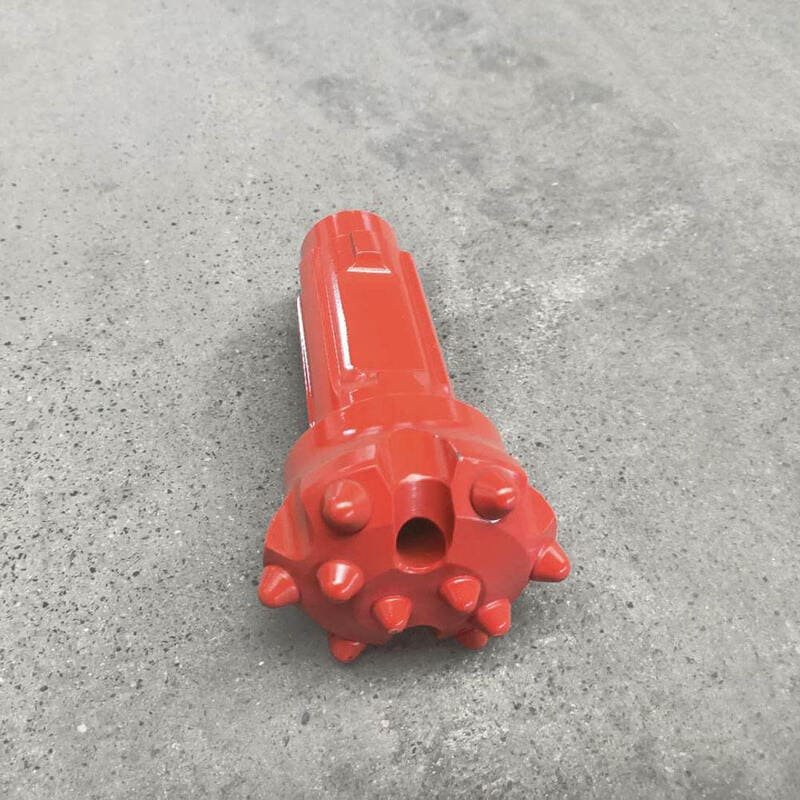
Selecting the Right DTH Drill Bit
Choosing the appropriate DTH drill bit for your specific project is crucial. Factors such as the rock type, hardness, and abrasiveness should guide your selection. For instance, hard rock formations16 may require bits with higher durability and penetration capabilities. Evaluate the bit design—concave, convex, or flat face—as each is suited for different ground conditions.
I've learned that picking the right DTH drill bit feels a bit like choosing the right shoes for a hike—you've got to match it to the terrain. Every rock type, from solid granite to crumbly sandstone, demands its own kind of bit. For those stubborn hard rock formations? They practically beg for bits that can endure and push through without giving up.
Optimizing Operational Parameters
Achieving optimal air pressure and rotation speed is critical for maximizing DTH drill bit performance. High air pressure enhances the energy transfer directly to the drilling surface, increasing efficiency. Similarly, adjusting the rotation speed according to the rock type ensures better penetration and minimizes wear on the drill bit. Consult manufacturer guidelines to fine-tune these parameters.
Remember my first time baking? I realized quickly that getting the temperature and timing just right was everything. Drilling is no different; achieving perfect air pressure and rotation speed is like finding that sweet spot for baking a perfect loaf of bread.
Regular Maintenance and Inspection
Routine maintenance is essential for keeping DTH drill bits in top condition. Regular inspection can help identify wear and tear early, preventing downtime due to unexpected failures. Implementing a preventive maintenance17 schedule that includes cleaning, lubrication, and timely replacement of worn components can extend the lifespan of your drill bits.
Ah, maintenance—the not-so-glamorous but absolutely essential part of keeping things running smoothly. Regular check-ups on your DTH drill bits can catch wear before they turn into major headaches.
Leveraging Technological Advances
Incorporating modern technology can also enhance DTH drill bit performance. Innovations such as real-time monitoring systems allow operators to track drilling parameters and make adjustments on-the-fly. Additionally, advanced materials18 used in bit construction can offer increased resistance to wear and longer operational life.
Technology isn't just for fancy gadgets—it's revolutionizing how we drill too! Ever tried using real-time monitoring systems? They let you keep an eye on drilling parameters and make on-the-fly adjustments.
Training and Skilled Personnel
Lastly, ensuring that your team is well-trained in operating DTH drilling equipment can significantly impact performance. Skilled operators are more adept at recognizing potential issues early and adjusting techniques to suit varying conditions. Consider investing in regular training programs to keep your team updated on best practices and new technologies in the field.
I can't stress enough how much skilled personnel can transform project outcomes—training them is like teaching them to dance; they become adept at recognizing potential issues early.
DTH drill bits reduce project timelines by 50%.False
While DTH bits speed up drilling, a 50% timeline reduction is exaggerated.
Proper bit selection enhances DTH drilling speed.True
Choosing the correct bit for ground conditions optimizes drilling efficiency.
Conclusion
DTH drill bits enhance project timelines by providing faster drilling speeds, superior penetration rates, and reduced downtime, especially in hard rock conditions, leading to significant cost savings.
-
Explore how DTH bits efficiently break hard rock. ↩
-
Discover tips for maximizing DTH drilling efficiency. ↩
-
Explore how faster drilling impacts overall project speed. ↩
-
Learn about the financial advantages of DTH technology. ↩
-
Understand how efficient energy use benefits drilling. ↩
-
Discover how consistent performance boosts project outcomes. ↩
-
Discover how efficient energy use boosts drilling speed and tool longevity. ↩
-
Learn why consistency in drilling boosts overall project success. ↩
-
Understand what makes DTH drill bits unique and effective. ↩
-
Learn tips to enhance drilling speed using DTH drill bits. ↩
-
Discover cutting-edge advancements in drilling technology for improved efficiency. ↩
-
Learn effective maintenance practices for high-speed drilling machinery. ↩
-
Explore how faster drilling enhances productivity and labor efficiency. ↩
-
Understand the energy dynamics involved in high-speed drilling processes. ↩
-
Ensure quality is maintained even at increased drilling speeds. ↩
-
Discover top-rated bits for superior performance in tough conditions. ↩
-
Learn how a maintenance plan extends tool life and efficiency. ↩
-
Explore materials offering enhanced durability and performance. ↩







